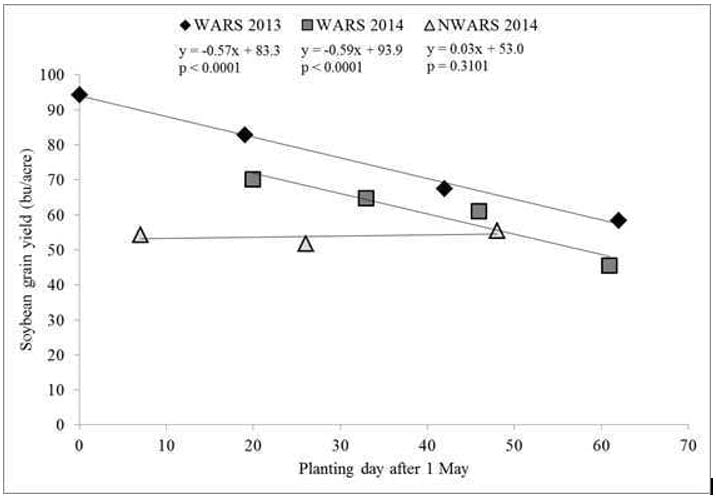Dr. Peter Thomison, OSU Extension
 Corn GDD Tool to Identify “Safe” Hybrid Maturities for Late Planting. Dr. Bob Nielsen at Purdue University has written an article describing a powerful decision aid, U2U Corn GDD Tool, which can be used to identify “safe” hybrid maturities for late planting. The GDD Tool is currently available for Ohio and it can estimate county-level GDD accumulations and corn development dates based on current and historical GDD data plus user-selected start dates, relative hybrid maturity ratings, GDDs to black layer, and freeze temperature threshold values. The article can be found here: (http://www.kingcorn.org/news/timeless/HybridMaturityDelayedPlant.html ).
Corn GDD Tool to Identify “Safe” Hybrid Maturities for Late Planting. Dr. Bob Nielsen at Purdue University has written an article describing a powerful decision aid, U2U Corn GDD Tool, which can be used to identify “safe” hybrid maturities for late planting. The GDD Tool is currently available for Ohio and it can estimate county-level GDD accumulations and corn development dates based on current and historical GDD data plus user-selected start dates, relative hybrid maturity ratings, GDDs to black layer, and freeze temperature threshold values. The article can be found here: (http://www.kingcorn.org/news/timeless/HybridMaturityDelayedPlant.html ).
Silage Corn. Although corn for silage responds to timely planting, it is more tolerant of late planting than is corn planted for grain. Silage growers can generally continue to plant adapted hybrid maturities for silage purposes until late June because silage harvest typically occurs several weeks before physiological maturity. Penn State University researchers have reported yields of more than 20 tons/acre with mid-June plantings in some years. Their studies indicate that corn silage can produce reasonable forage yields in many areas, even when planted in late June. Penn State University studies have shown that energy levels are reduced in later-planted silage, presumably because of lower starch levels due to reduced grain fill.
“Ultra-early” Hybrids. Results of past OSU research indicate that some 100-104 day hybrids are available with yields comparable to hybrids of commonly grown maturities in early and late planting environments. The 100-104 day hybrids showed greater yield potential than the hybrids with maturity ratings less than 100 days (ultra-early hybrids). Grain moisture of the early 100-104 day hybrids were 3 to 5% lower than commonly grown maturities. At test sites with the highest level of stalk lodging, most of these early hybrids showed levels of stalk lodging comparable to those of the commonly grown hybrid maturities. However, our knowledge of early hybrid performance across Ohio production environments is limited. Some shorter season hybrids may not be suitable in terms of their stress tolerance and disease resistance.
Table 1 provides a comparison of grain moisture content at harvest in hybrids ranging from 102 to 113 days relative maturity (days relative maturity) planted in late April/ early May and in early/mid June (unpublished OSU research, 2009-2010).
Table 1. Effects of planting delays and hybrid maturities on corn grain moisture at harvest. * number in parentheses indicates number of studies
| Hybrid Maturity (days) | |||||
| Location/Year | Planting Date | 102 | 104 | 111 | 113 |
| —–% harvest moisture—- | |||||
|
S. Charleston 2009 (3)*
|
Late April/Early May | 13.9 | 14.9 | 16.6 | 18.9 |
| Early/Mid June | 16.4 | 17.3 | 22.3 | 28.4 | |
|
S. Charleston 2010 (3)
|
Late April/Early May | 10.9 | 11.7 | 13.0 | 13.0 |
| Early/Mid June | 14.8 | 16.3 | 21.9 | 23.4 | |
|
Hoytville 2010 (1)
|
Late April/Early May | 15.7 | 15.2 | 22.1 | 23.0 |
| Early/Mid June | 23.1 | 24.5 | 28.8 | 30.0 | |









